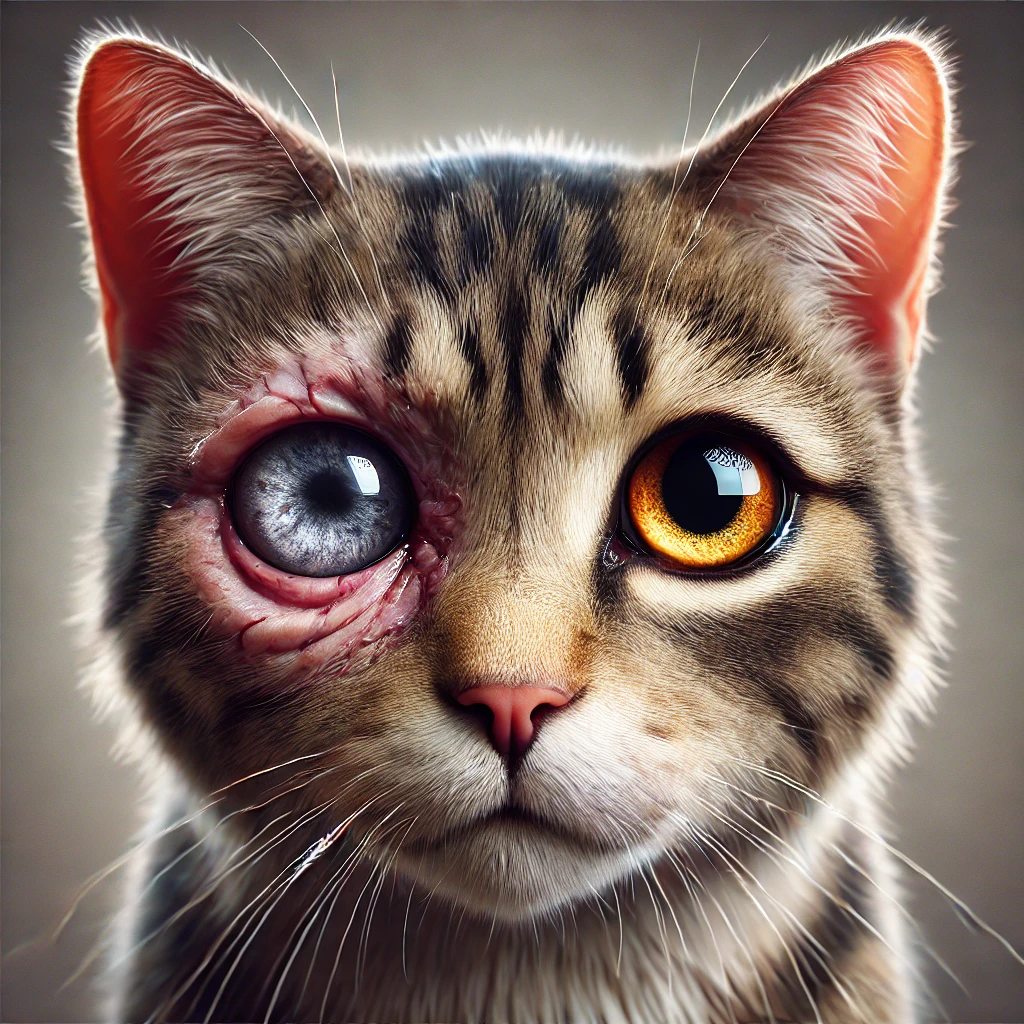Ocular FIP In Cats and Cat Eyes: Effective Treatment with GS-441524
Ocular FIP vs. Common Cat Eyes Problems: How to Tell the Difference and Find the Right Treatment
Is your cat suddenly squinting, showing cloudy eyes, or having strange pupil sizes?
These symptoms might indicate more than a simple eye infection. Ocular FIP, a severe complication of feline infectious peritonitis (FIP), can cause serious eye damage, particularly in young cats. Understanding ocular FIP and distinguishing it from common cat eyes problems can be lifesaving for your feline companion.
What is Ocular FIP?
Ocular FIP is a specific form of feline infectious peritonitis (FIP) caused by a mutated feline coronavirus (FCoV). Unlike typical eye infections, ocular FIP involves inflammation that can damage important ocular tissues and structures, potentially leading to blindness if untreated.
It frequently occurs in the dry form of FIP, though wet FIP cases can occasionally present eye issues. Young cats with weaker immune systems are especially vulnerable. When the virus attacks, it often targets organs including the eyes and the central nervous system, making prompt treatment crucial.

Ocular FIP Symptoms vs. Common Cat Eye Issues
Many pet owners struggle to tell if their cat has simple eye irritation or something more serious like ocular FIP. Recognizing the differences can mean early intervention and better outcomes for infected cats.
Common Symptoms of Ocular FIP:
- Anterior uveitis: inflammation affecting the iris and ciliary body.
- Cloudiness or a milky haze in the eyes, known as an “aqueous flare”.
- Iris color changes, turning darker or reddish.
- Tiny white deposits on the cornea (keratic precipitates).
- Unequal pupil sizes, medically termed anisocoria.
- Painful squinting, sensitivity to light, and visible discomfort.
Common Cat Eye Issues (Less Severe):
- Simple conjunctivitis (pink eye) causing mild redness or discharge.
- Temporary irritation from dust or allergens.
- Minor scratches or abrasions without lasting changes.
If your cat shows persistent or severe symptoms, especially those above, immediate veterinary evaluation is essential. Ocular FIP is aggressive and requires swift action.
Why Do Cats Develop Ocular FIP?
Cats become infected when the harmless feline coronavirus (FCoV) mutates inside their bodies. Not all cats exposed to FCoV develop FIP—only about 5% to 10% actually progress to the disease. Young cats or cats under stress with compromised immune responses are more likely to develop ocular FIP.
The immune system attempts to fight off this mutation but often triggers harmful inflammation. As a result, cats may experience damaging ocular lesions and, if untreated, permanent vision loss.
Diagnosing Ocular FIP Effectively
Veterinarians face a challenge when diagnosing ocular FIP because clinical signs overlap with less severe eye conditions. Accurate diagnosis typically requires:
- Physical examination to identify ocular lesions and inflammation.
- Polymerase chain reaction (PCR) testing on samples taken directly from affected ocular tissues.
- Blood tests checking antibody levels for feline coronavirus (FCoV).
PCR tests offer high accuracy but are not always positive, even in genuinely infected cats. Therefore, vets usually rely on combining these methods with your cat’s medical history and other clinical signs to reach a clear diagnosis of FIP.
How is Ocular FIP Treated?
Historically, treating ocular FIP has been challenging, but today’s treatments bring hope. GS-441524, a groundbreaking antiviral therapy, has significantly improved outcomes for cats suffering from FIP.
Why Choose GS-441524?
- Proven effective in managing feline infectious peritonitis (FIP), especially in complicated forms like ocular and neurological variants.
- Reduces inflammation quickly, providing rapid symptom relief.
- High success rates backed by clinical experience, even in severe cases involving the central nervous system.
GS-441524: The Clear Choice for Treating Ocular FIP
Not all ocular treatments offer equal effectiveness. Anti-inflammatory drugs or steroids may temporarily ease symptoms but won’t eliminate the underlying virus. GS-441524, however, directly targets feline coronavirus (FCoV) replication, controlling viral spread and helping restore your cat’s eye health.
Your Cat’s Future: What to Expect?
Early intervention is vital. Cats treated early in the disease often recover fully, maintaining their vision. Untreated, ocular FIP progresses rapidly, potentially resulting in permanent blindness or even systemic illness affecting multiple organs, including kidneys and liver.
Prompt use of GS-441524 can stop ocular FIP progression in its tracks, protecting your cat’s sight and overall health.
Why PetExist GS-441524 Stands Out
When battling something as serious as ocular FIP, quality matters. PetExist offers premium-grade GS-441524 in injectable and oral forms, making treatment convenient and accessible.
- Raw Material Purity exceeding 99.94%, ensuring maximum potency and effectiveness.
- Rapid symptom improvement noted typically within days.
- Recommended by veterinarians and trusted by countless pet owners.
- Flexible dosing options tailored to your cat’s specific needs.
BPetExist GS-441524 provides your cat with the highest-quality antiviral care available today.
Your Cat Deserves Clear, Healthy Eyes
Seeing your beloved cat struggle with painful, inflamed eyes is heartbreaking. But ocular FIP doesn’t have to be a life sentence. The right treatment can restore your cat’s sight and quality of life.
Contact PetExist today to learn how GS-441524 can help your cat overcome ocular FIP.
Your cat’s brighter future starts now.

